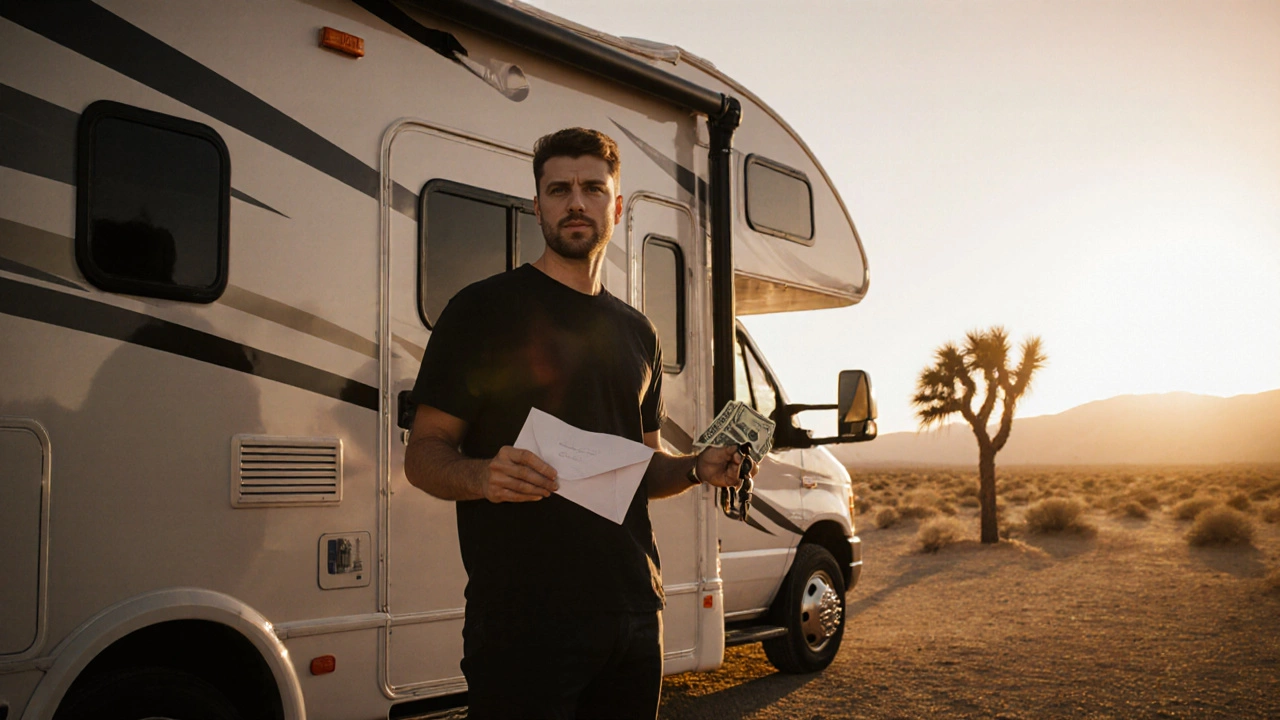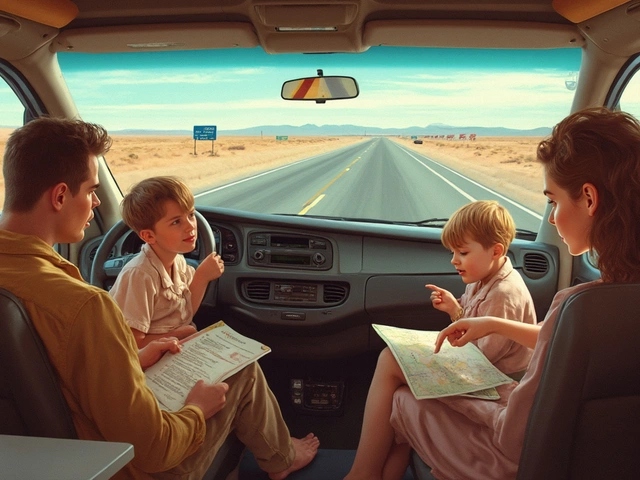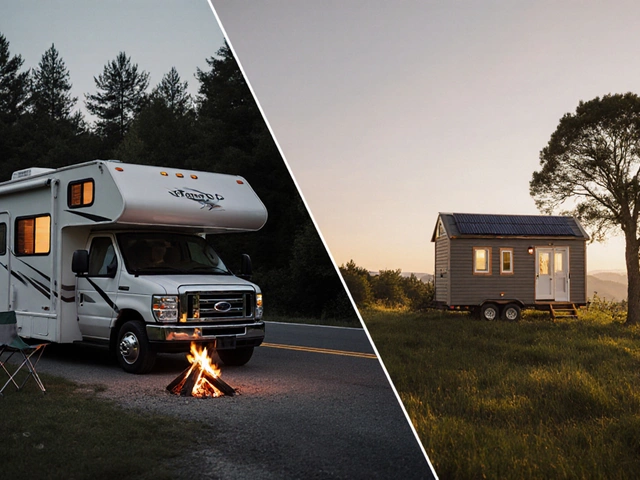RV Financing Calculator
Enter RV Details
Financial Comparison
Cash Option
Total Cost: $60,000.00
Financed Option
Monthly Payment: $540.68
Total Interest Paid: $39,722.40
Total Cost: $99,722.40
Buying an RV is a big decision. Not just because of the price tag-new motorhomes can cost anywhere from $50,000 to over $300,000-but because it’s not just a vehicle. It’s your home on wheels, your weekend escape, your road trip partner. And when it comes time to pay for it, the big question isn’t just how much, it’s how: should you pay cash or finance it?
Pay cash: freedom without debt
Paying cash for an RV means you own it outright from day one. No monthly payments. No interest charges. No lender breathing down your neck if you miss a payment. That kind of freedom is real. You can drive it across the country, park it in a remote forest, or leave it sitting for months without worrying about a bank calling to check in.There’s also the psychological edge. If you’ve saved up $80,000 and hand over that money in one go, you feel it. You know exactly what you’ve traded: savings, time, maybe even a vacation fund. But you also know you’re done. No more RV bills. No more wondering if you can afford gas this month because the payment’s due.
Here’s the catch: most people don’t have $80,000 sitting around. Even $30,000 is a stretch. If you drain your emergency fund to buy an RV, you’re trading one risk for another. What happens if your car breaks down? Your job changes? A medical bill shows up? You’re left with no safety net. That’s why paying cash only makes sense if you’ve got solid finances already-more than six months of living expenses saved, no high-interest debt, and a steady income.
Finance it: spread the cost, but pay more
Financing an RV means you’re borrowing money to buy it. You put down a chunk-usually 10% to 20%-and pay the rest over time. Loan terms range from 5 to 20 years, with interest rates between 5% and 12%, depending on your credit score and the lender.Let’s say you buy a $75,000 motorhome. You put down $15,000 and finance $60,000 at 7% over 15 years. Your monthly payment? Around $540. Sounds manageable, right? But here’s the twist: over the life of that loan, you’ll pay nearly $40,000 in interest. That’s more than half the original loan amount. You’re not just buying an RV-you’re paying for the privilege of having it now instead of later.
RV loans are different from car loans. Banks treat them like mortgages because they’re big, long-term, and often used as secondary homes. That means stricter rules: higher down payments, longer terms, and sometimes even requirements that you live in the RV for a minimum number of days per year to qualify for certain rates.
And if your credit score is below 680? You’re looking at rates closer to 10% or higher. That $60,000 loan could cost you $65,000 in interest over 15 years. Suddenly, that $540 monthly payment looks a lot heavier.
Depreciation: the silent killer
RVs lose value fast. A new motorhome can drop 20% in value the moment you drive it off the lot. After three years, it’s often worth 40% less than what you paid. After five? You’re looking at 50% or more depreciation.That’s a problem if you’re financing. If you sell the RV after three years, you might owe $40,000 on a loan but only get $35,000 for the RV. That’s $5,000 you still owe-even after you hand over the keys. That’s called being upside down on your loan. It’s common with RVs because of how fast they depreciate and how long the loan terms are.
If you paid cash, you wouldn’t care. You’d sell it for whatever you could get. No debt. No stress. But if you financed, you’re stuck with the math: how long will you keep it before the value drops below what you owe?
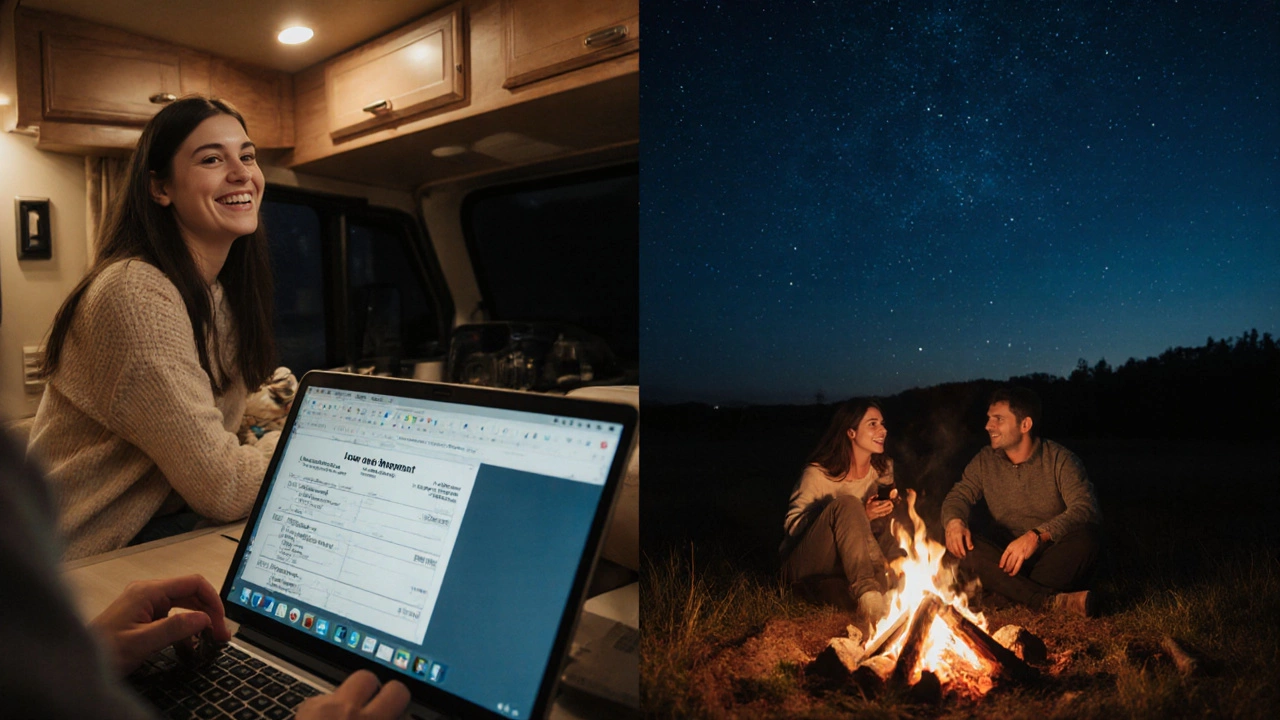
Opportunity cost: what else could that money do?
Let’s say you have $75,000 to spend on an RV. You could pay cash. Or you could invest that money.Historically, the stock market returns about 7% to 8% per year on average. If you invested $75,000 instead of spending it, and earned 7% annually, after five years you’d have over $105,000. That’s $30,000 in growth-without lifting a finger.
Now, imagine you finance the RV for $60,000 at 7% interest and invest your $15,000 down payment plus the $540 monthly payment you’d have made on the loan. You’re not just saving $15,000-you’re investing $15,000 + ($540 x 60 months) = $47,400 total. At 7%, that grows to over $70,000 in five years.
That’s not fantasy. That’s compound interest. You’re still driving the RV. You’re still enjoying it. But you’re also building wealth on the side. And if you sell the RV later, you can pay off the loan and walk away with cash in your pocket.
When financing makes sense
Financing isn’t bad-it’s just expensive. But there are times when it’s the smarter move:- You don’t have enough saved to pay cash without risking your financial stability.
- You have excellent credit and can lock in a rate below 5%.
- You plan to use the RV for business (like full-time travel content creation) and can write off interest or depreciation.
- You’re buying a used RV that’s already depreciated-less risk of being upside down.
- You’d rather keep cash for emergencies, home repairs, or other investments.
Some people finance because they want to upgrade every few years. They buy a mid-range RV, use it for three years, then trade it in. That works if the lender lets you roll the remaining balance into a new loan. But it’s risky. You end up paying interest on interest. It’s like a treadmill: you’re moving, but not getting anywhere.
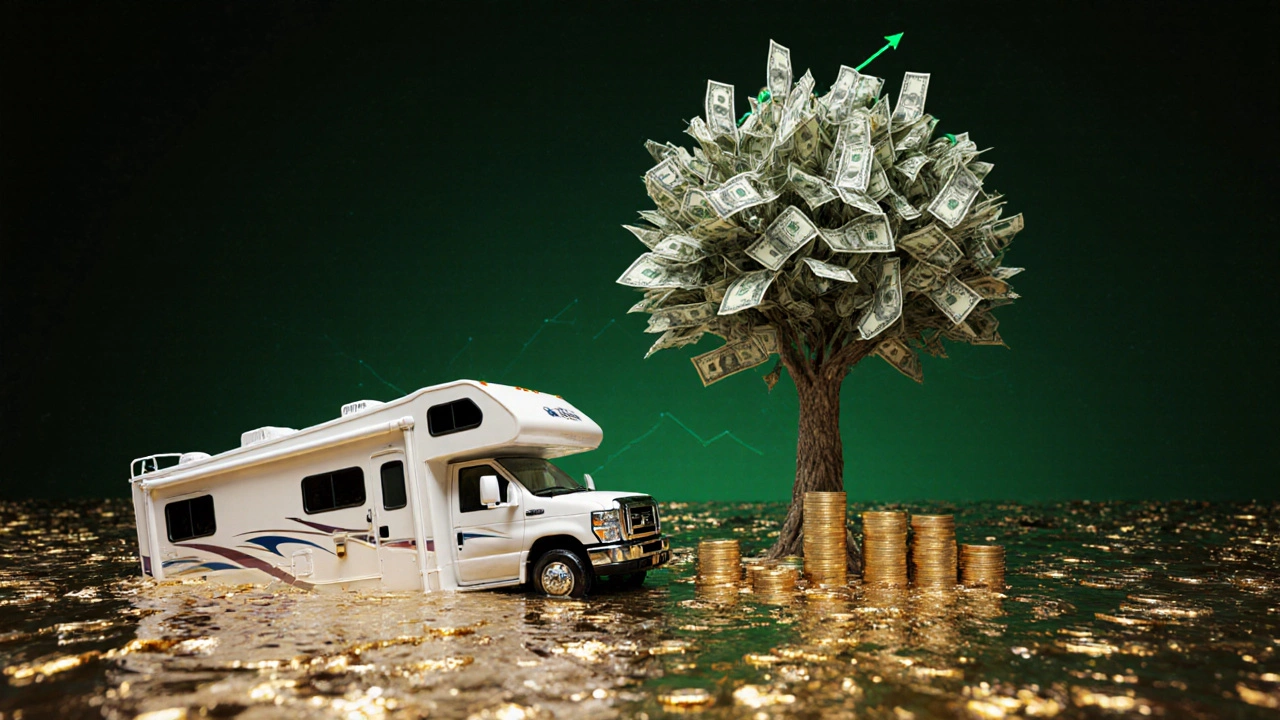
When paying cash is the only smart choice
Paying cash wins when:- You’ve saved for years and can afford it without touching your emergency fund.
- You hate debt and want zero monthly obligations.
- You plan to keep the RV for 10+ years-long enough to outlive the depreciation.
- You’re retired and on a fixed income-no risk of missing payments.
- You’ve had bad experiences with loans before and want to avoid them entirely.
There’s a quiet confidence that comes with owning something outright. No calls from lenders. No surprises. You can park it anywhere. You can leave it for a season. You can sell it anytime without paperwork headaches.
What most people miss
The real cost of an RV isn’t the sticker price. It’s everything else:- Insurance: $500 to $1,500 a year, depending on coverage.
- Registration and taxes: $200 to $800 annually.
- Maintenance: Oil changes, tire replacements, roof seals, generator service-$1,000 to $3,000 a year if you’re lucky.
- Storage: If you don’t have space at home, you’ll pay $50 to $150 a month to store it.
- Fuel: A large motorhome gets 8 to 12 mpg. At $4 a gallon, that’s $40 to $60 just to fill up.
If you finance, you’re adding interest on top of all these costs. If you pay cash, you still pay them-but you don’t pay extra for the privilege of borrowing.
Final advice: know your numbers
There’s no universal answer. It depends on your money, your habits, and your goals.Ask yourself:
- Can I pay cash without hurting my financial safety net?
- Will I use this RV enough to justify the monthly payment?
- What’s my credit score? Can I get a rate below 6%?
- How long do I plan to keep it?
- Do I have other high-interest debt I should pay off first?
If you answered yes to the first question and no to the rest, pay cash.
If you answered no to the first but yes to the others, financing might be your best path-just keep the term short, put down as much as you can, and avoid rolling old debt into a new loan.
And if you’re still unsure? Wait. Save another year. Drive a rental for a few months. Test the lifestyle before you commit $80,000. You’ll thank yourself later.
Is it cheaper to pay cash for an RV than to finance it?
Yes, paying cash is always cheaper in the long run because you avoid interest payments. For example, financing a $60,000 RV at 7% over 15 years adds nearly $40,000 in interest. Paying cash means you pay exactly what the RV costs-nothing more.
Can I finance an RV with bad credit?
Yes, but it’s expensive. Credit scores under 680 often mean interest rates above 10%, sometimes as high as 15%. You’ll also need a larger down payment-20% or more-and may face stricter income requirements. If your credit is poor, focus on improving it first or consider a used RV with a shorter loan term.
How much should I put down on an RV loan?
Aim for at least 10% to 20%. Many lenders require 20% for new RVs, especially if you have average credit. A bigger down payment lowers your monthly payment, reduces the total interest paid, and helps you avoid being upside down on the loan if the RV depreciates quickly.
What’s the longest RV loan term available?
Up to 20 years, though 10 to 15 years is more common. Longer terms mean lower monthly payments but significantly more interest paid over time. A 20-year loan on a $60,000 RV at 7% means paying over $55,000 in interest-more than the original loan amount.
Should I finance a used RV instead of a new one?
Yes, if you’re financing. Used RVs have already taken their biggest depreciation hit. A three-year-old RV might cost 40% less than new, but still has plenty of life left. You’ll get a better deal, lower monthly payments, and less risk of being upside down on the loan.
